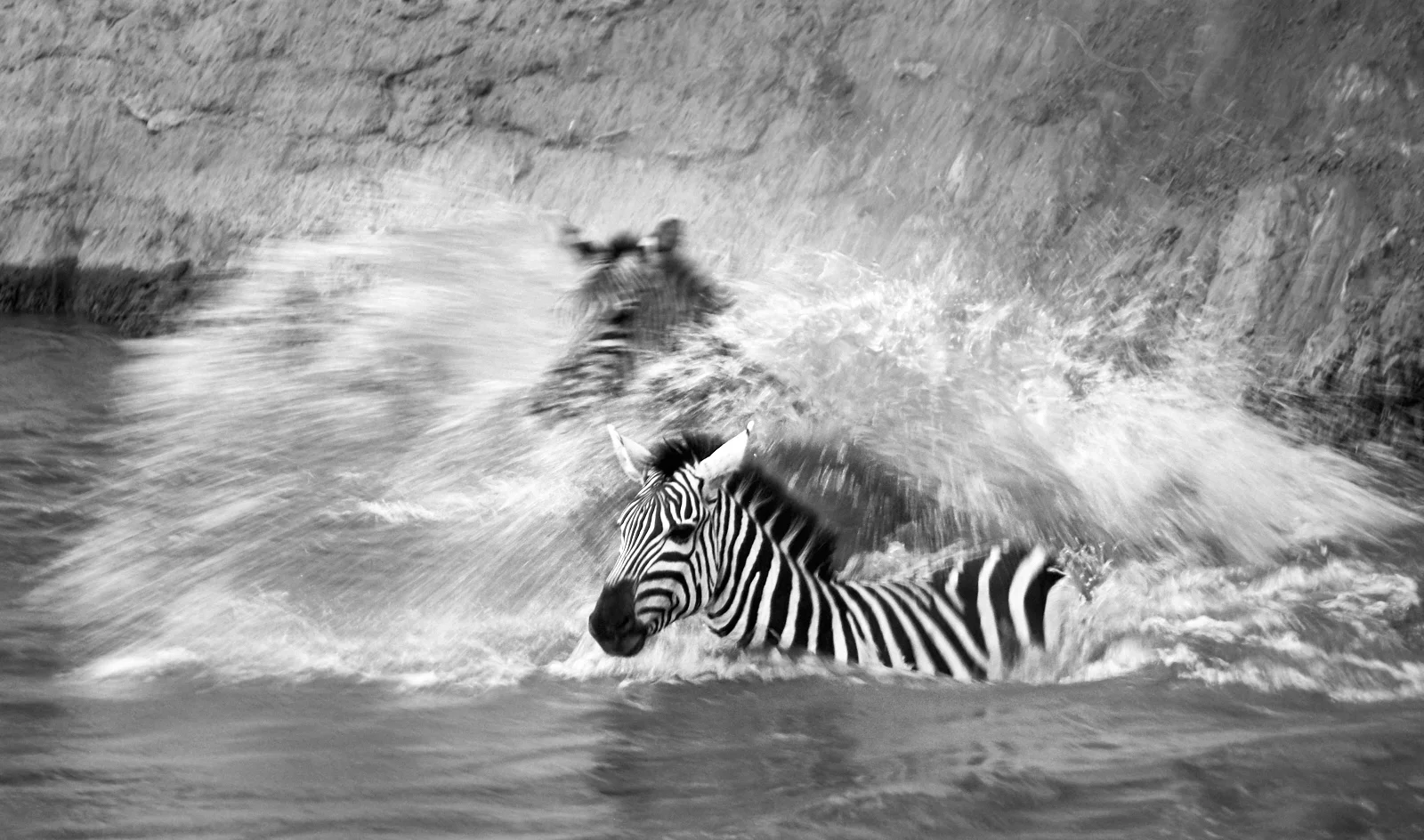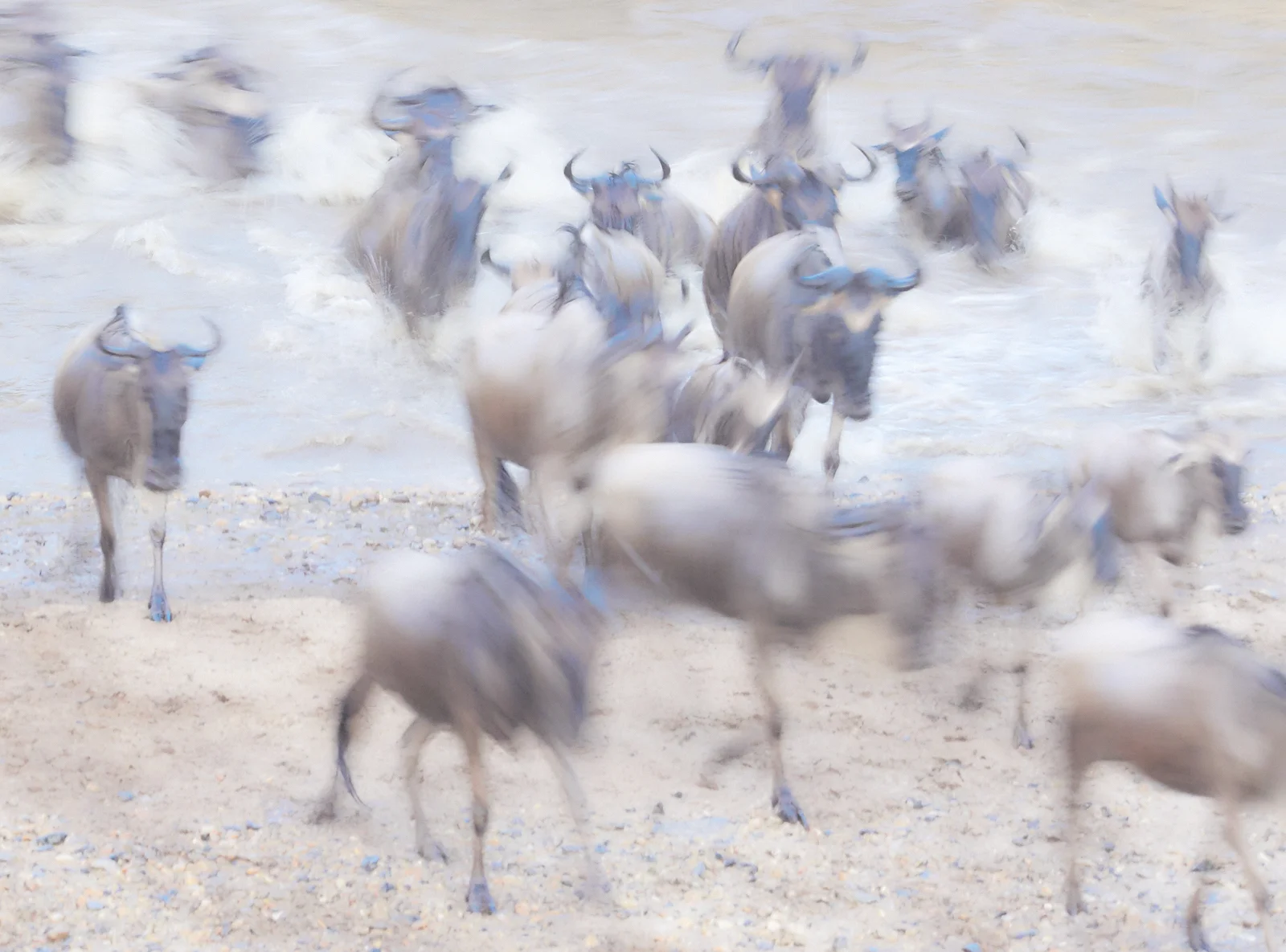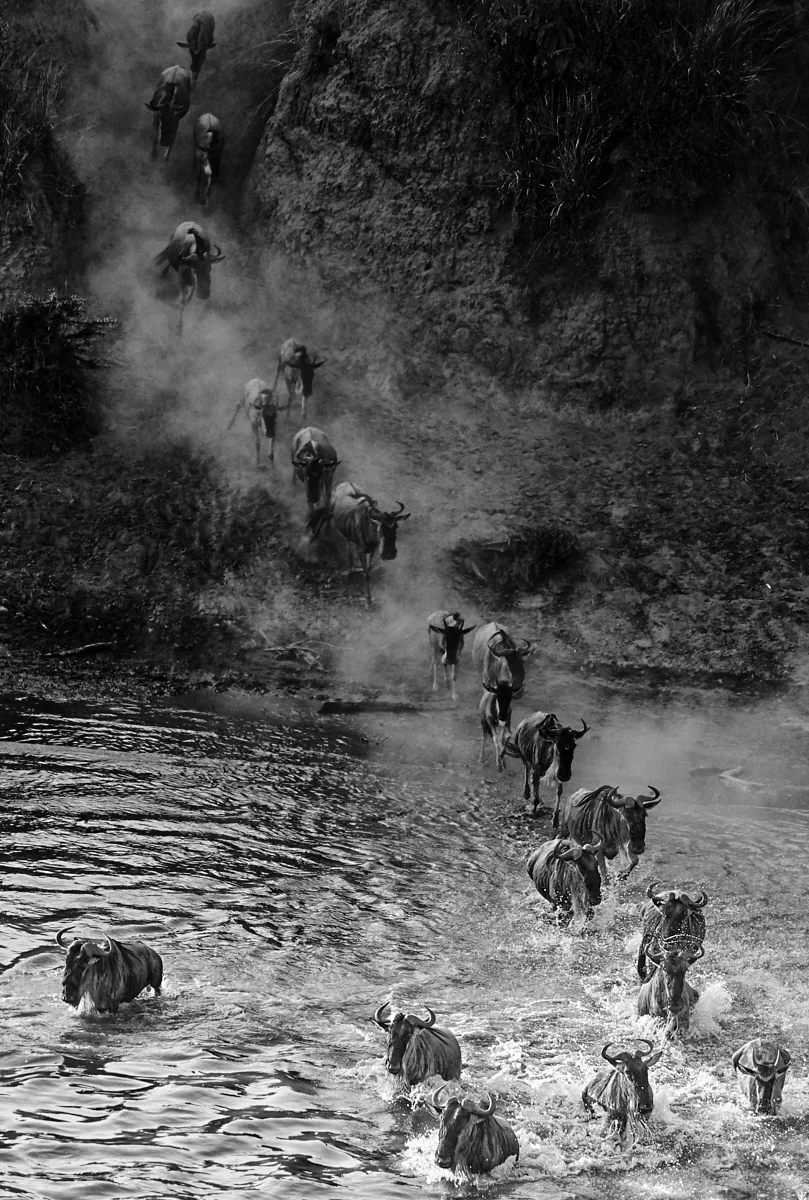Tentative crossing.
Every year around 2 million wildebeest, zebra, gazelle and eland cross the Mara River on the Great Migration, with some individuals crossing to and fro several times.
Obvious hazards include the banks of the river, precipitous and rugged in places, and its rocky bottom, and broken limbs are regular occurrences during crossings. Huge Nile crocodiles lurk in the water and pick off some of the migrators, although we saw many more attempted attacks than kills - only one wildebeest and one zebra were taken during the 12 crossings we watched.
Leaping from a steep bank.
There is safety in numbers - a thunderous rush of churning legs is protective for those involved, and the only successful crocodile attacks we saw picked off isolated and small individuals. The larger crossings even scare off nearby hippo and elephant.
Pushing past hippo.
Crossings begin usually with a massing of herds on the western bank, and then frequently it is plucky zebra who initiate crossings, with a handful in an advance party descending the main bank to the water’s edge where they drink and slowly explore the shallower water. Less commonly we saw wildebeest in larger numbers gathering first on the water-side banks, and then driving across the water. Frequently the attempt is aborted - sometimes this is caused by an obvious crocodile attack, but the advance party is often spooked by some invisible hazard and they rush back up to the safety of the grassland plateau.
If they do cross, usually other species join in, and the whole shebang usually storms up the far bank and rushes off to graze on fresh grass.
The banks at the major crossing points are eroded and sandy, which results in wonderful clouds of dust enveloping the descending and milling creatures, with horns, legs and stripes looming through the gloom during descents and ascents. Low, early morning light gives added beauty to such scenes.
Wild-Eye guides and drivers are enormously experienced at judging when a crossing is likely - they often park well back from the river, sometimes along the main road, and observe the ebb and flow of animals on the far bank. Local numbers of low-rent matatas full of tourists from Nairobi are also borne in mind, since a cluster of these on either bank frequently inhibits a crossing and the herds will move on to the next crossing point. Being able to arrive early at crossing points and observe between 7 and 9.30am, and to stay between 4.30 and 6.30pm, gives Wild-Eye guests an enormous advantage in seeing less crowded and interrupted crossings in kinder light.
Massing herd - but will they cross and, if so, where?
Strangely, as zebra advance parties are paddling in the shallow water, one can often easily see semi-submerged crocodiles very nearby, yet the migrators seem less inhibited by them than they are by pods of hippo and collections of badly-placed matata. This results in some spectacular encounters between striped legs and snapping jaws.
I shall show images of the two successful crocodile attacks in another post, which will be clearly identified in case some do not wish to see nature red in tooth and claw. We were sobered by these events, where nature unfolded before us in all its harsh reality, and it was helpful afterwards to discuss what we had seen. These events would occur whether we had been there to watch and photograph or not, and we all felt it was important to document them in the same way as all the other wonderful behaviour we witnessed during the week.
Fortunately, early on our last morning we were treated to a short and successful crossing by wildebeest and zebra in magical light, and we were grateful for this wonderful and positive final experience.

























